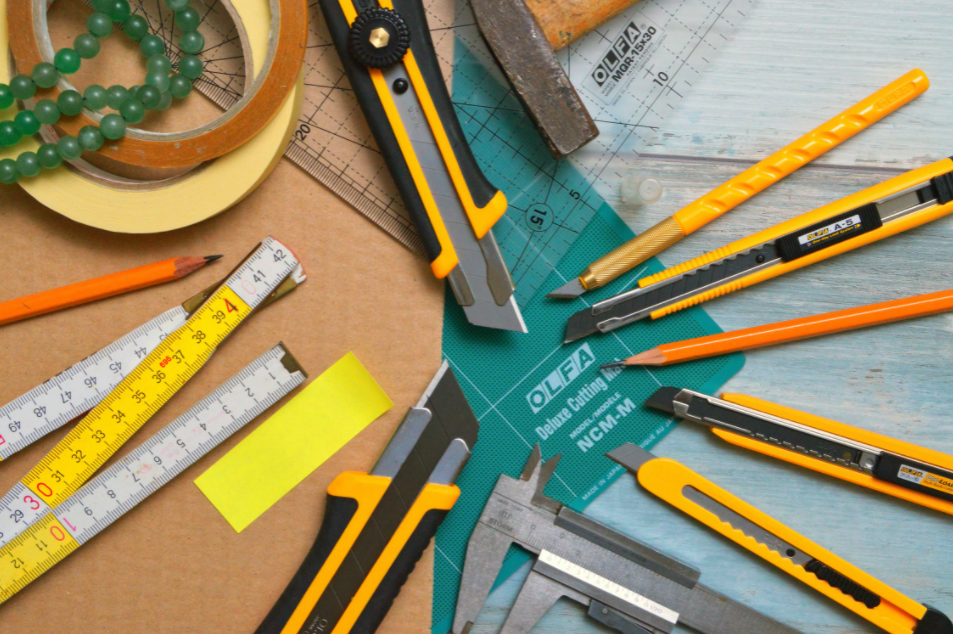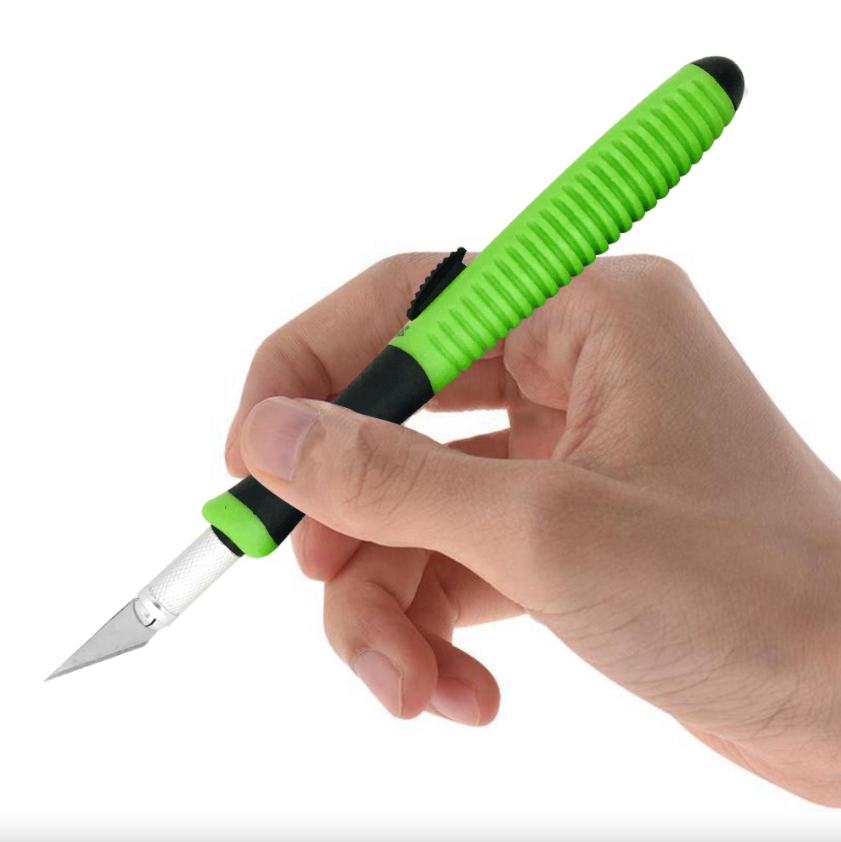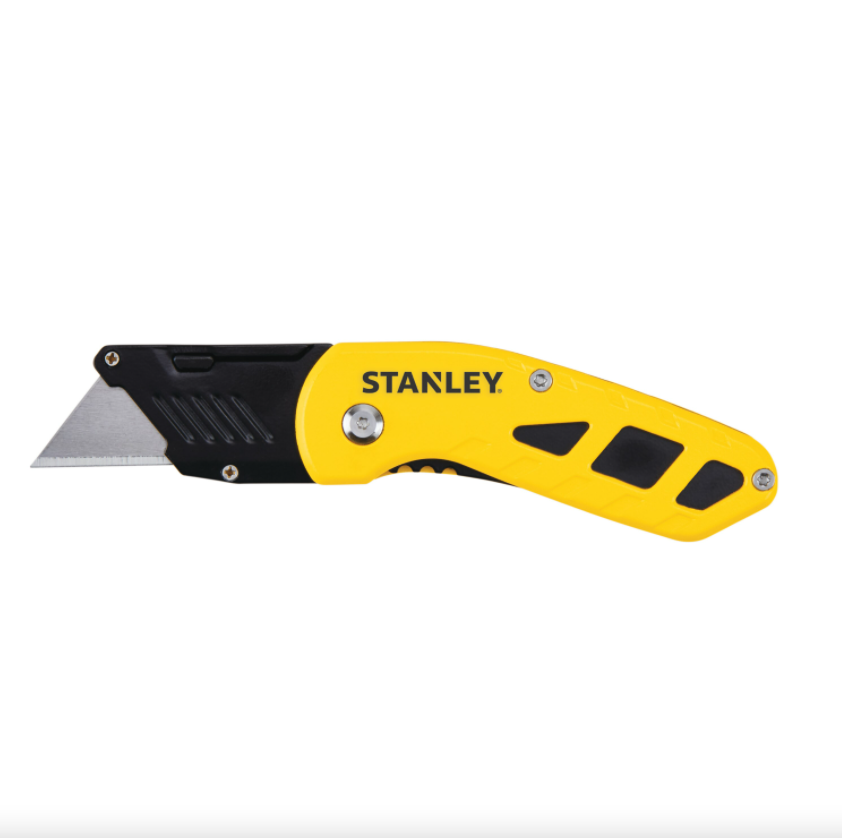Do you know the difference between a craft and a utility knife? Keep reading to find out!

Using the proper tools is a key to good success for just about any project. Most people know how frustrating it can be to try to “make do” with a tool that kind of works but really isn’t the best instrument for the given situation. When it comes to selecting a cutting tool, it is important to understand that craft knives and utility knives are quite different in their design. They each have applications where they excel and areas where they function best. Here are some key differences to take into consideration when deciding which is best for your next project.
The Craft Knife
A craft knife is generally quite small and often has a handle that resembles an ink pen. Because of its shape and size, it is held mostly with the fingers, much like a writing instrument. It has a relatively thin blade that can be pointed or rounded at the tip. The blade is usually fixed, and will have some sort of cap or cover to protect the cutting edge when not in use. Most craft knives will be designed so that the blades can be replaced when they become dull. Craft knives like these offer an upgraded ceramic blade, as well as various compatible blade styles that can be interchanged as needed, depending on the project or task they are being used for.
The Utility Knife
A utility knife, on the other hand, is generally a larger cutting tool with a handle that is bulkier and designed to be held with the whole hand. The blade is usually thicker and a little longer, and is able to be retracted or folded into the handle for carry or storage purposes. The blade of a utility knife may also have the capability to be adjusted to various depths for cutting through different thicknesses of materials. Blades are easy to replace, but utility knives usually only offer one or two kinds of blades to choose from.
When To Use Each
There are going to be some tasks that could be accomplished equally as well with the craft knife or the utility knife. However, one usually tends to work better than the other for a specific application. Here are some things to consider when deciding when and how to use each one most effectively.
Craft knives are generally preferred for jobs that require precision or detailed cutting. Because the craft knife has a smaller handle and thinner blade, it can access places that a utility knife could not. Another factor to consider is handling. Due to the way a craft knife is held, it is often easier to control and adjust the cutting angle, making it the better choice for intricate designs. These factors make craft knives very popular for things like cake decorating, candle making, rubber stamping, nail art, woodworking, leather applique, and soap art. Scrapbook enthusiasts also tend to prefer craft knives when they are cutting out paper or sticker items like lettering or filigree.
Utility knives tend to be selected for tasks that require more muscle and less precision. Their blade design gives them the ability to cut through thicker materials, and they tend to be more durable and tough. They aren’t as easy to control, and most people find that they work best for relatively straight cuts. The blades don’t usually flex or break as easily, making utility knives a good choice for things like roofing, carpet installation, removing old caulk or grout, breaking down cardboard boxes, landscaping, and drywall work. Do-it-yourselfers (DIY projects) might find the utility knife especially useful for things like window screen replacement and shingle repairs.
Buying Considerations
When shopping for either style of knife, be sure to look for brands that use quality materials. Ceramic blades are normally preferable to metal ones because they do not rust or spark, and because they maintain their edge up to 11 times longer. Handles should be durable, comfortable to hold, and easy to grip. If you plan to use the tool for long periods of time, seek out a style that is ergonomic, and designed to reduce stress and strain. Take a little time to understand how to change the blade, as some may require special blade change tools that you will have to purchase separately. If you are a left-handed person, be sure to confirm that any tool you consider buying is ambidextrous.
Final Thoughts
Whether you are a homeowner who plans to tackle a few projects around the house or an avid crafter who spends much of their free time creating works of art, it is a great idea to have both a utility knife and a craft knife at your disposal. Armed with your knowledge of how and when to use each of them, you will be ready for just about any cutting project that comes along!


No comments:
Post a Comment